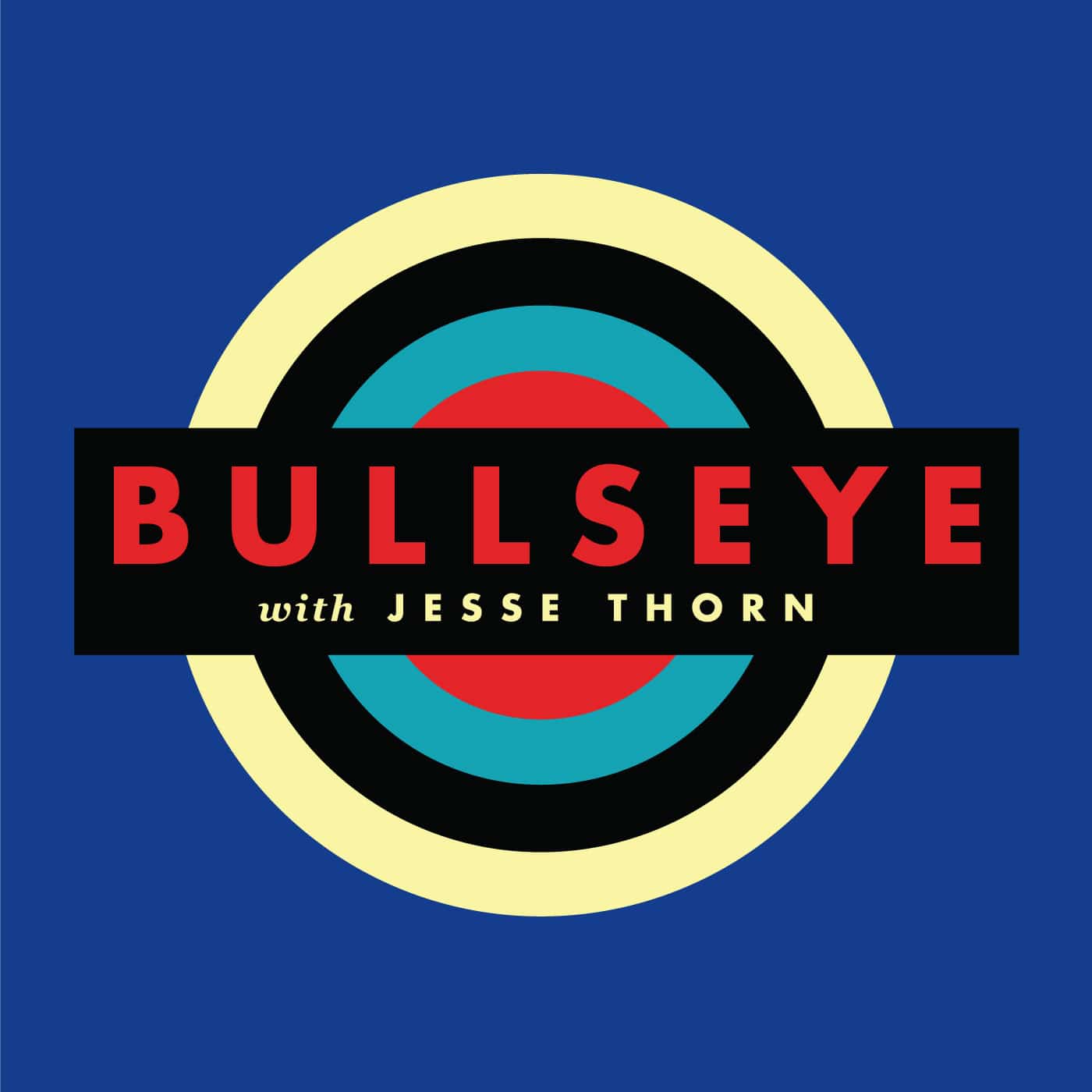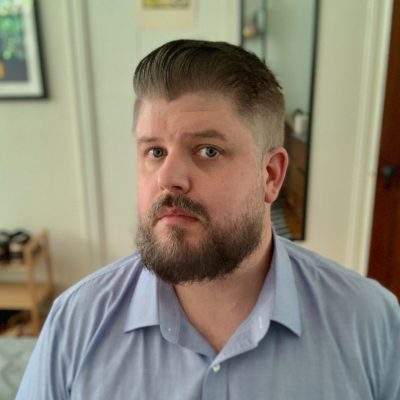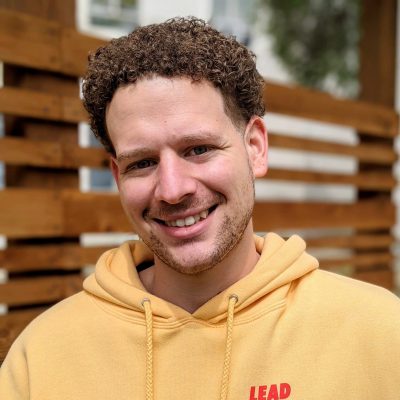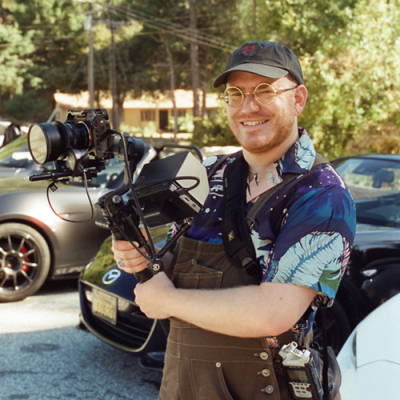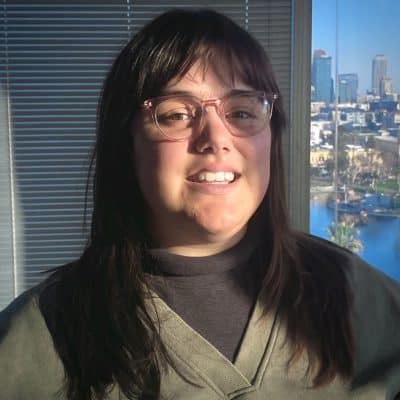Transcript

music
Gentle, trilling music with a steady drumbeat plays under the dialogue.

promo
Speaker: Bullseye with Jesse Thorn is a production of MaximumFun.org and is distributed by NPR. [Music fades out.]

jesse thorn
I’m Jesse Thorn. It’s Bullseye.

music
“Huddle Formation” from the album Thunder, Lightning, Strike by The Go! Team plays. A fast, upbeat, peppy song. Music plays as Jesse speaks, then fades out.

jesse
We’re replaying a couple of our favorite interviews with Bullseye guests from the past, and next up is the great Susan Orlean, from 2018. Susan is a staff writer at The New Yorker. Her work has also appeared in Vogue and Esquire and This American Life. She’s the author of eight books, covering topics like New England, Saturday night across America, and people who are fanatical about orchids. That last book, The Orchid Thief, ended up being the basis of the Academy Award nominated film adaptation. [Music fades out.] Susan is also a disarming interview, a meticulous researcher, and a beautiful writer. These days, she lives here in Los Angeles, most of the time. And being an author and reader, she has visited the beautiful, historic Central Library dozens and dozens of times. Her latest book is about that library and its history. And the devastating fire that almost demolished it, in 1986. The book is also kind of a pay-on to libraries everywhere. What they mean to her, to us, and why every library is a vital institution. She called it The Library Book. I really love it. [Music fades in.] Okay. Let’s get into our interview.

music
Light, jazzy music with gentle vocalizations.

jesse
Susan Orlean, welcome back to Bullseye. Always happy to see you.

susan orlean
It’s great to be with you!

jesse
Susan, what is your relationship with libraries, personally? Other than your obvious financial relationship with libraries.

susan
Right. [They laugh.] One would hope. [Jesse agrees.] Um, well, I grew up going to the library. That was very much a part of my childhood. My parents were great library goers. They didn’t really believe in buying books. They—I think they felt like, “Why would you buy a book? You can go to the library and borrow the book. And if it’s not in, you put your name on a hold list and you get it when it’s available!” And they were born in the depression, and I’m sure that’s a lot of it. Which is that buying books seemed a bit of an indulgence that wasn’t necessary. I grew up going to the library a couple times a week, with my mom. And I found it absolutely magical. It was not like going to a bookstore or toy store. It was—partly because there was no money, there was no financial relationship, and when you’re a kid, the idea that you can have anything you want is really intoxicating.

jesse
And a library is on a—on a real short list of places that welcome everyone, including kids who are a hassle!

susan
Right. [Jesse laughs.] Well, and I do think that—in the last 20 years—we’ve, as a society, become more and more conscious. I kind of call it the Starbucks effect. We’ve become conscious of how… there’s home and there’s your workplace and there’s kind of a desire for another place. Somewhere to go. Somewhere to see other humans and just, sort of, share the space with them. It—I think it’s why people go to co-working spaces. I think it’s why people go to public parks, even if they’ve got a backyard. There’s something very special about being somewhere around other people. And you’re not there to interact with them, you’re just sharing the space with them. That’s definitely some—a quality of libraries. I mean, they’re—closest analogue is probably a public park. You know, there are things to do in a park and there’s, you know, god knows what that the city offers, but sometimes it’s just kind of nice to be there. And there are other people there. It’s also a space that we share with a variety of people. It’s not a mediated group of people. It’s a chance that you’re gonna encounter a huge range of people. Which, for some it’s kind of discomfiting, but for other people, you can make the argument that it’s kind of an opportunity to really see your community.

jesse
You have written for The New Yorker for 30 some years.

susan
Yikes! [They laugh.]

jesse
And you were a New Yorker for a long time. How did your experience of living in Los Angeles compare to your expectations about Los Angeles?

susan
I had traveled here a lot, over the years, before I moved here and had been downtown once, as far as I knew. My expectation of Los Angeles was that I would never spend time downtown. And, at the time I moved here—which is now seven years ago—downtown was just on the brink of really changing and revitalizing and repopulating. I never imagined that I would be doing a book about the library. I moved to Los Angeles because my husband was asked to help with a company that was starting up and we thought, “Oh, that’d be fun. We’ll go for a year. We’ll get some nice weather and go back to New York at the end of the year.” [Beat.] In the course of being here, I was given a tour of the downtown library. And, first of all, I thought, “Oh my god, this building is amazing. It’s a beautiful building and a very eccentric, interesting piece of architecture. 1920s era but inflected with all of this sort of Egyptian and Moroccan kind of aesthetic. It’s just a really interesting building. So, I was kind of struck immediately, just about what a cool building it was and how I had never been downtown to see it. But walking through the library and thinking, “Boy, this is just an incredible repository of amazing stories.” I was being told some of the stories of various city librarians who had run the library over the years. Many of whom were incredibly eccentric, fascinating figures. And I found myself just being drawn in more and more, thinking, “Oh my god, this is an amazing place! Somebody should write about this!” Not thinking that somebody was me. [Jesse chuckles.] And right at that moment, the person giving me the tour had pulled one of the books off the shelf and took a deep whiff of the book. I thought, “Well, I guess I’m in a new city where people do things like smell books.” [Jesse laughs in the background.]

susan
And I kind of dismissed it until he said, “Well, you can still smell the smoke in some of them.” [Beat.] And I thought, “Wow, they used to let people smoke in the library?” That seemed very bold. And I said, you know, “Was this back when they allowed smoking?” And he said, “No! They didn’t ever allow smoking in the building! It was from the fire!” I said, “What fire?” And he said, “The big fire! The big fire in 1986!” And I said, “I don’t know what you’re talking about.” He said, “Well, the big fire. It closed the library down for seven years.” And, you know, he moved on and I was going like, “What?! What? Stop! Stop! What? No, no! Don’t—I don’t wanna see the next room, I wanna hear about this fire.” That was the moment where that frame of “this is a great story” really, truly clicked into place and became a real story, in my head. Which was, I wanted to write about the library and in this case, the library had had this dramatic… event that really shaped it, in many ways. And it coalesced into a real story for me. And I knew, immediately. I just thought, “I’m doing a book about this.” [Susan agrees several times as Jesse speaks.]

jesse
So, your book has a few lines of inquiry in it. One of them is a sort of behind the scenes at the library—you skulking from department to department, figuring out all the interesting things that happened in a library. One of them is the history of its directors, which is possible since it’s only existed for 130 years, or whatever it is. And one of the directors that stood out to me was Charles Lummis. The thing that I think is really, particularly fascinating about Lummis—that makes him so important to this story, is that really his role in the history of Los Angeles, and partly in the history of America, is as an advocate for an American identity that represented this part of America. That it was, like, more than Boston, Philadelphia, and New York, but it included the Navajo and it included the Miwok and it included all the—and this—and the Spanish. That seems like a big deal and it seems like part of, maybe, why they thought it was a good idea for him to run the library, despite him having no library experience. [Susan chuckles.] Because the library, in part, maybe was an assertion of identity.

susan
I think that he—he is really important, in that sense, that Los Angeles was no longer—certainly as he could influence it—not—no longer trying to ape the culture of New York or Philadelphia or Chicago, but instead was having a sense of itself as a distinct place with its own identity. It’s funny for us to imagine, now, seeing Los Angeles as it is, now, that the idea that you would build buildings that had a Spanish influence—that was just not done! You were trying—at—before this identity really, kind of, took hold, it was an effort to make LA look like the big cities of the Northeast. A sense of history of what had been here and who had been here was—that was new! I mean, his influence to say, “Well, this is what Los Angeles is.” He was the founder of the Southwest Museum. That stuff wasn’t being collected or preserved in any way. It was very radical, actually, what he did. And it’s interesting, because he didn’t grow up here. He was definitely a transplant. But he really, truly fell in love with the essential, old California character of this amalgam of Spanish culture and Native American culture and the new culture of people moving in and identifying it and, really, preserving it and celebrating it.

jesse
Yeah, like, most of the—most of the important books of the early Los Angeles Library, at least as you describe it and I believe you, are about citrus fruits. [Laughs.]

susan
Right! [Laughs.] And sheep herding! [Jesse agrees.] And yeah! I mean, the initial—I mean, we—you—it gives you a real sense of the difference in what was going on in LA at the turn of the century vs. New York City, which had a well-established library that was already building a collection of important literary works. The—among the initial purchases of the LA Library when it was—when the association was formed to have a library happen—were books about citrus, about beekeeping, about—I mean, this was a country town. It was a couple thousand people. It was not a significant city. And then one of the other themes that continued, which was interesting, is that the library existed in rented space for a very long time.

jesse
Yeah, I mean people—it’s—obviously you can just imagine what the New York Public Library, the main branch of the New York Public Library looks like. That was the giant libraries of New York and Boston [Susan agrees.] And all these cities that had been cities since the, you know, 18th century.

susan
And in the meantime, Los Angeles—at that point—had a library that was on the upper floor of a department store. [Jesse laughs.] And you would ride the elevator along with people who were going shopping for brassieres and, you know, they would get off on the brassiere floor or the floor with children’s clothing and you would ride on up and go to the library. And one of the—it was a cause for much embarrassment, in the city, this feeling that, well, LA couldn’t possibly be an intellectual center if it didn’t have a library.

jesse
More with Susan Orlean after a quick break. They never convicted anyone of starting the 1986 library fire. Susan will tell me why, when she started her library book, she thought she could solve the case. It’s Bullseye, from MaximumFun.org and NPR.

promo
Music: Quiet, slightly discordant music. Rund Abdelfatah: Who was Qasem Soleimani? And what exactly was his role in Iran? This week on Throughline, how the assassinated Iranian general and the organization he represented have shaped the relationship between the US and Iran for decades. That’s this week on Throughline, from NPR: the podcast where we go back in time to understand the present. [Music ends.]

promo
[Background music.] Speaker 1: I listen to Reading Glasses because Brea and Mallory have great tips. Mallory O’Meara: You're a comics reader and you wanna use a library-connected app, you can try out Hoopla. Speaker 2: I listen for the author interviews. Speaker 3: I'm mad at myself that I waited as long as I did to start reading Joan Didion. Speaker 4: They give me reading advice I didn't even know I needed. Mallory: If you go in person to an event, and go up to an author or a filmmaker, or anybody, and tell them what they—you don't like about their work, you're a trash baby. Brea Grant: I—look. I understand you didn't like Heroes season three, that's fine. [Mallory cracks up.] I like—I don't actually need to know that information. Brea: I'm Brea Grant. Mallory: And I'm Mallory O'Meara. Brea: We're Reading Glasses, and we solve all your bookish problems. Every Thursday on Maximum Fun. [Music ends.]

jesse
Welcome back to Bullseye. I’m Jesse Thorn. We’re replaying my 2018 conversation with the writer Susan Orlean. She writes for The New Yorker, among many other publications. Her books include The Orchid Thief, Rin Tin Tin, and Saturday Night. Her newest tells the story of the Los Angeles Public Library and the world of the Los Angeles Public Library. So much more. It’s called The Library Book. It’s out now, in paperback. Let’s talk about the fire that destroyed a substantial portion of the Central Library and, particularly, a substantial portion of the collection. It was driven by these… stacks that basically functioned like a—like a charcoal chimney for your barbeque or grill. And the fire was absolutely catastrophic. What was the proportion of books that were destroyed and/or damaged by this fire?

susan
There were 1,000,000 books either destroyed or damaged. And that was about—a little more than 50% of the entire collection. 400,000 were—they were vaporized, basically. I mean, this was a fire that burned for seven and a half hours. It reached temperatures of 2500 degrees. And, as you say, it’s the stacks—which were the area where the books that aren’t out in the open shelves are stored in these stacks. And it’s typical for a library. But the division between the different tiers, within the stack, rather than being a ceiling—which would keep a fire contained—they were open grating. So that the fire basically, just—these are seven tiers tall. And the fire simply just blasted through all seven tiers. It couldn’t have been a better setup for a fire.

jesse
I mean, this was a fire where these spaces had grown so hot that firefighters were having to leave after, like, five and ten minutes, simply because they couldn’t physically be there, just ‘cause it got so hot inside the building.

susan
Yeah, I mean that’s an amazing—they had these oxygen canisters that would normally last an hour, and they were breathing so heavily, because they were so hot, that the canisters were lasting about ten minutes. And they went through more than a thousand of these oxygen cannisters. And they had to keep swapping the teams out, because nobody—it was just too hot to be in there. 2500 degrees—doesn’t matter if you’re in a fire suit, it’s just unbearable. At one point, over half of the entire city of Los Angeles fire department was working to try to put this fire out. And they ended up relying on the county to staff the firehouses around the city, because nobody was around. They were all at the library, trying to put the fire out. And they needed somebody to be there in case someone else—someone’s house caught on fire! I mean, it was a very—really difficult fire, and almost every firefighter I spoke to said they never fought a fire that was as challenging and as fierce as this fire. It was… I think, for many of them, the sort of—I don’t wanna say the highlight of their career, because obviously it wasn’t something they were joyful about, but it was the most intense experience of their careers.

jesse
The arson investigators eventually decided that arson had been the cause of the fire. Who was the person who was accused of having started it?

susan
A young man in his 20s, named Harry Peak, who was… I guess, predictably, a wannabe actor, errand boy, you know. Did odd jobs. Parked cars. That kind of thing. Was—well, what happened was he had told a number of friends that he had started the fire. So, very quickly, once there was a reward associated with anyone having—providing a tip for solving the fire, one of his friends—good to have friends like that—came forward and basically connected the fire department to him and they began following him around and ended up interviewing him to figure out whether his boasts of having started the fire were, in fact, true.

jesse
‘Cause he was a charming liar.

susan
He was a—from every description I had from anybody—he was an immensely likeable guy. Charming and just a crazy fibber and would just fib about stupid things. Not—just fib. You’d say, “Where have you been?” And he’d say, “Oh, I was having drinks with Cher.” You know. He just couldn’t tell a straight story. And his friends would—were exasperated by him and at the same time also said he was a really good guy; he would give you the shirt off his back. And that was interesting, to me. They all use that exact expression: he would give you the shirt off his back. He was beloved and also drove them crazy.

jesse
So, in a way, this is what might be called a true crime narrative?

susan
I guess so!

jesse
And I wonder if you felt pressured by the fact that you were telling a crime story, to have a narrative that resolved comfortably—to provide an answer to the question.

susan
I did. I—first of all, I thought, “I’m gonna solve this.” Which is utterly vain. I mean, the—there’s no way that a civilian with no access to the evidence and no knowledge of how to investigate an arson would be able to crack the case. But that was my first thought. I was all, “I’m gonna solve this.” And…

jesse
Maybe if you had a ragtag band of friends.

crosstalk
Susan: Right, and you’d say— Jesse: And, like, a special van. [Chuckles.] Susan: Yes! “Come on, guys!” And a big dog, right? Jesse: Yeah. Susan: Isn’t that the Scooby-Do premise? Jesse: Yeah. Mm-hm! Susan: But, um…

susan
I’m fairly comfortable with the idea that I don’t have to come to a final conclusion. And it may be out of the reality of so many of the things I write about don’t have a tidy conclusion. Or don’t resolve in the way that I might have expected them to resolve. In this case, I think following the different possible outcomes, it’s a bit of a choose your own adventure. And you come to your own conclusion, essentially. Because there’s no way to reexamine the evidence, at this point. What I’ve tried to do is lay out all of those different paths of thought that could lead you to a conclusion. [Beat.] It may be that, when I wrote The Orchid Thief, and I was determined to see a ghost orchid, and as time was growing short and I thought, “Oh my god, the book is ruined! I’m never gonna see a ghost orchid.” And I finally had a deadline that I had to make. And I didn’t see one. Suddenly, it seemed like, “Well, of course I’m not gonna see one. That’s the point. It’s—it doesn’t matter that I’m not gonna see it. It would never match the anticipation of seeing it.” So, it was the first experience I had of a non-conclusion conclusion. And, in its own way, it felt—I mean, it is the reality. It—the fact is… without giving anything away, it’s not possible to come to a conclusion. I mean, my notion that I would solve it being something that—very quickly I realized, “Well, that’s nuts.” But it isn’t possible to ultimately know what happened. And I was comfortable, finally, thinking, “That’s okay. I’m giving you the different paths of thought and maybe you see the—one of them being the persuasive one.”

jesse
Well, Susan Orlean, I really loved your book and I always love having you on the show. Thank you so much for coming over and taking the time.

susan
Oh, thank you. It’s a pleasure.

jesse
Susan Orlean—her book, The Library Book, is an absolute delight. I can’t recommend it highly enough. It’s out in paperback, now. It is not just for Angelenos. So, if you’re—if you live in Los Angeles, great. But if you have ever been to or enjoyed a library, Susan’s book is for you. It is really—it’s a real winner.

music
Jazzy piano music with thumpy beats.

jesse
That’s the end of another episode of Bullseye. Bullseye is produced at MaximumFun.org world headquarters, overlooking MacArthur Park in beautiful Los Angeles, California—where the birds have discovered the barge, the raft that kind of floats around the lake. I think it was once a boat landing. Anyway, they’ve covered it in what birds cover things in. The show is produced by speaking into microphones. Our producer is Kevin Ferguson. Jesus Ambrosio is our associate producer. We get help from Casey O’Brien and his giant electric piano. Our production fellows are Jordan Kauwling and Melissa Dueñas. Our interstitial music is by Dan Wally, also known as DJW. Our theme song is by The Go! Team. Thanks to them and their label, Memphis Industries, for letting us use it. And one last thing: we have done many interviews in our show’s nearly two decades! Starting with the time that my friend, Jordan, went to DickDale.net, on the web, and called the king of the surf guitar at his trailer in the desert. All of those interviews are available on our website, at MaximumFun.org. We’re on Facebook, Twitter, and YouTube. Just search for Bullseye with Jesse Thorn. You can keep up with the show there. And I think that’s about it. Just remember: all great radio hosts have a signature sign off.

promo
Speaker: Bullseye with Jesse Thorn is a production of MaximumFun.org and is distributed by NPR. [Music fades out.]
About the show
Bullseye is a celebration of the best of arts and culture in public radio form. Host Jesse Thorn sifts the wheat from the chaff to bring you in-depth interviews with the most revered and revolutionary minds in our culture.
Bullseye has been featured in Time, The New York Times, GQ and McSweeney’s, which called it “the kind of show people listen to in a more perfect world.” Since April 2013, the show has been distributed by NPR.
If you would like to pitch a guest for Bullseye, please CLICK HERE. You can also follow Bullseye on Twitter, YouTube, and Facebook. For more about Bullseye and to see a list of stations that carry it, please click here.
Get in touch with the show
People
How to listen
Stream or download episodes directly from our website, or listen via your favorite podcatcher!
